



Iraqi Shiite Muslim youth take part in a ritual in the capital Baghdad on December 16, 2010, during the Ashura commemorations marking the 7th century killing of Imam Hussein, the grandson of Prophet Mohammed, in the Battle of Karbala in central Iraq.

Iraqi Shiite Muslim men bleed as he take part in a ritual in the capital Baghdad on December 16, 2010, during the Ashura commemorations marking the 7th century killing of Imam Hussein, the grandson of Prophet Mohammed, in the Battle of Karbala in central Iraq.

Iraqi Shiite Muslim men beat themselves with the flatside of a knife as they take part in a ritual in the capital Baghdad on December 16, 2010, during the Ashura commemorations marking the 7th century killing of Imam Hussein, the grandson of Prophet Mohammed, in the Battle of Karbala in central Iraq.

Ajaran Syiah jika dibiarkan berkembang boleh mengancam keselamatan negara kerana pengikut yang fanatik menganggap umat Islam mazhab lain sebagai kafir.
“Bagi mereka, darah pengikut fahaman lain adalah halal dan ia bermakna penganut Ahli Sunnah Wal Jamaah boleh dibunuh – Datuk Muhammed Khusrin Munawi,Pengarah JAIS
200 pengikut Syiah ditahan
KUALA LUMPUR 16 Dis. – Kegiatan satu ajaran Syiah tegar yang dikhuatiri boleh mengancam keselamatan negara dikesan bergerak aktif di negara ini berikutan penahanan 200 pengikut dan dua ketua kumpulannya, malam semalam.
Dua ketua kumpulan itu termasuk seorang warga Iran telah dihadapkan ke Mahkamah Rendah Syariah Gombak Barat, Kuang, hari ini dan dibebaskan dengan jaminan.
Para pengikut lain juga telah dibebaskan dengan jaminan Jabatan Agama Islam Selangor (JAIS) dan akan dipanggil untuk diambil keterangan dalam masa terdekat.
Kumpulan yang ditahan di sebuah rumah kedai di Taman Sri Gombak, Batu Caves, dekat sini itu dikatakan berbahaya kerana menganggap penganut Islam mazhab lain sebagai kafir dan halal dibunuh.
Mereka yang menggunakan nama Hauzah Ar Ridha Alaihissalam itu dikesan sudah dua tahun menjalankan kegiatan mereka di tingkat empat rumah kedai berkenaan.
Dalam serbuan sepasukan penguat kuasa JAIS pada pukul 10.15 malam itu, seramai 200 pengikut terdiri daripada lelaki dan perempuan termasuk kanak-kanak sedang khusyuk berselawat dan mendengar khutbah daripada seorang lelaki warga Iran.
Sebahagian pengikutnya yang ditahan merupakan pensyarah dan pelajar institusi pengajian tinggi (IPT), peguam dan kakitangan kerajaan.
Pengikutnya terdiri daripada 75 lelaki dan 35 wanita tempatan, enam wanita dan tiga lelaki warga Indonesia, dua wanita Myanmar serta masing-masing seorang lelaki Pakistan, Myanmar dan Iran, manakala selebihnya kanak-kanak.
Ia merupakan penahanan terbesar melibatkan pengikut ajaran yang didakwa sesat dicatatkan di Selangor setakat ini dan JAIS percaya ajaran tersebut turut tersebar di negeri-negeri lain.
Pengarahnya, Datuk Muhammed Khusrin Munawi berkata, pihaknya telah mengikuti pergerakan kumpulan terbabit sejak dua tahun lalu dan setelah memperoleh cukup bukti mengaitkan mereka sebagai pengikut ajaran Syiah yang tegar, barulah markas itu diserbu.
Beliau berkata, ajaran Syiah jika dibiarkan berkembang boleh mengancam keselamatan negara kerana pengikut yang fanatik menganggap umat Islam mazhab lain sebagai kafir.
“Bagi mereka, darah pengikut fahaman lain adalah halal dan ia bermakna penganut Ahli Sunnah Wal Jamaah boleh dibunuh.
“Ajaran Syiah lebih bahaya berbanding ajaran sesat seperti Al Arqam. Pengikut Syiah di Iran dan India misalnya bergaduh sesama Islam semata-mata berbeza fahaman.
“Inilah yang ingin dielakkan berlaku di negara ini dan tujuan ia disekat,” katanya kepada pemberita ketika ditemui di lokasi serbuan di sini hari ini.
Muhammed Khusrin berkata, mengikut Enakmen Pentadbiran Perundangan Islam 1989, fahaman dan ajaran Syiah adalah menyeleweng daripada pegangan Ahli Sunnah Wal Jamaah kerana wujud beberapa percanggahan dari sudut akidah dan syariah.
Katanya, antaranya adalah menyanjung sahabat Rasulullah, Saidina Ali secara keterlaluan, menghalalkan nikah mutaah, menolak hadis yang diriwayatkan oleh Ahli Sunnah Wal Jamaah sekalipun hadis Mutawir dan mengkafirkan para sahabat Rasulullah.
“Penyelewengan dari sudut syariah pula adalah menolak ijmak ulama, qias dan mengamalkan nikah mutaah. Pengikut Syiah juga terlibat pelbagai penyelewengan umum seperti percaya ganjaran syurga jika menziarahi kubur Saidina Husin.
“Selain itu menyiksa diri dengan memukul badan menggunakan rantai sehingga berdarah sempena 10 Muharam, mengharuskan jamak sembahyang dalam semua keadaan dan tidak mewajibkan haji,” katanya.
Menurut Muhammed Khusrin, pihaknya percaya ajaran Syiah yang memudahkan ibadat dan menghalalkan nikah mutaah menjadi punca tarikan umat Islam di negara ini untuk menjadi pengikutnya.
Beliau berkata, kumpulan ajaran sesat terbabit mempunyai dana sendiri bagi membiayai aktiviti dan menyewa bangunan untuk dijadikan markas operasi, manakala penyebarannya pula dibuat secara tertutup melalui penganjuran majlis-majlis tertentu.
Katanya, semua yang ditangkap akan didakwa di bawah Seksyen 12(c) Enakmen Jenayah Syariah Selangor 1995 iaitu menghina, mengingkari, melanggar atau mempertikaikan arahan-arahan yang dinyatakan dan diberikan fatwa oleh pihak berkuasa agama.Utusan…
……………………………………………………..

Pakistani Shiite Muslims touch a symbolic horse of Imam Hussein during a procession in Lahore on December 16, 2010. Devotees observe Muharram with large processions, holding banners and carrying models of the mausoleum of Hazrat Imam Hussain and his people, who fell at Karbala. Shiites show their grief and sorrow by inflicting wounds on their own bodies with sharp metal tied to a chain with which they scourge themselves in order to depict the sufferings of the martyrs.

An Iraqi Shiite Muslim beats himself with a sword during Muharram, a commemoration of the death of Imam Hussein in the Battle of Karbala in the year 680 a.d. in Baghdad, Iraq, Thursday, Dec. 16, 2010.


Lebanese Shiite Muslim women and supporters of Hezbollah take part in Beirut’s southern suburb on December 16, 2010, in Ashura commemorations marking the 7th century killing of Imam Hussein, the grandson of Prophet Mohammed, in the Battle of Karbala, in central Iraq


Turkish Shiite women take part in a religious procession held for Ashura in Istanbul on December 16, 2010. Ashura commemorates the killing of Imam Hussein, a grandson of the Prophet Mohammed, by armies of the caliph Yazid in 680 AD. Tradition holds that the revered imam was decapitated and his body mutilated in the Battle of Karbala.

Turkish Shiite women take part in a religious procession held for Ashura in Istanbul on December 16, 2010. Ashura commemorates the killing of Imam Hussein, a grandson of the Prophet Mohammed, by armies of the caliph Yazid in 680 AD. Tradition holds that the revered imam was decapitated and his body mutilated in the Battle of Karbala.



A Lebanese Shiite Muslim man bleeds as he takes part in a ritual in the southern city of Nabatiyeh on December 16, 2010 during the Ashura commemorations marking the 7th century killing of Imam Hussein, the grandson of Prophet Mohammed, in the Battle of Karbala.


Turkish Shiite women take part in a religious procession held for Ashura in Istanbul on December 16, 2010. Ashura commemorates the killing of Imam Hussein, a grandson of the Prophet Mohammed, by armies of the caliph Yazid in 680 AD. Tradition holds that the revered imam was decapitated and his body mutilated in the Battle of Karbala.


Iranian Shiite Muslims beat themselves during a ritual at Tehran’s Karbalaiya Mosque on December 16, 2010 as they take part in Ashura commemorations marking the 7th century killing of Imam Hussein, grandson of Islam’s Prophet Mohammed, in the battle of Karbala.

An Indian Kashmiri Shiite Muslim bleeds after flagellating himself with a cluster of knives during a religious procession in Srinagar on December 14, 2010, held on the seventh day of Muharram, which commemorates the slaying of the Prophet Mohammed’s grandson in southern Iraq in the seventh century. During the Shiite Muslim holy month of Muharram, large processions are formed and the devotees parade the streets holding banners and carrying models of the mausoleum of Hazrat Imam Hussain and his people, who fell at Karbala. Shiites show their grief and sorrow by inflicting wounds on their own bodies with sharp metal tied to a chain with which they scourge themselves in order to depict the sufferings of the martyrs.

A Lebanese Shiite boy reacts as he is cut in the head during Ashoura day, in the southern market town of Nabatiyeh, Lebanon, Thursday, Dec. 16, 2010. Thursday’ s commemorations marked the climax of Ashoura, the yearly mourning period in which Shiite Muslims remember the seventh century death of the Prophet Muhammad’s grandson, Imam Hussein, in a battle in the central city of Karbala.




An Indian Kashmiri Shiite Muslim flagellates himself with a cluster of knives during a religious procession in Srinagar on December 14, 2010 held on the seventh day of Muharram, which commemorates the slaying of the Prophet Mohammed’s grandson in southern Iraq in the seventh century. During the Shiite Muslim holy month of Muharram, large processions are formed and the devotees parade the streets holding banners and carrying models of the mausoleum of Hazrat Imam Hussain and his people, who fell at Karbala. Shias show their grief and sorrow by inflicting wounds on their own bodies with sharp metal tied to chain with which they scourge themselves, in order to depict the sufferings of the martyrs.


Sebenarnya mencederakan diri sendiri adalah haram mengikut ajaran Islam. Kalaupun mencintai ahlulbayt rasulullah s.a.w JADILAH PERHIASAN BAGI MEREKA. Elakkan penimbulan fitnah bagi mereka, Saya yakin nabi dan ahlulbaytnya tak ridha dengan apa yang dilakukan pengikut Syiah seperti dalam gambar-gambar di atas.. nak jelas lagi,sila dengar penjelasan ulamak di bawah…
——————————————————————
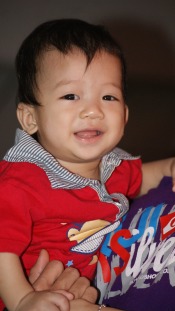

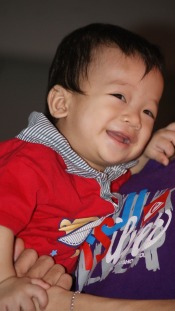









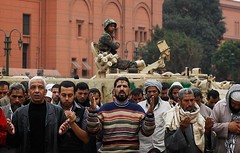
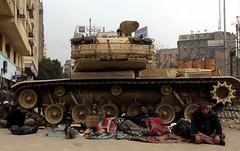
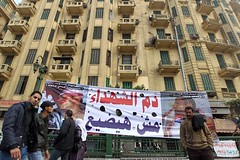
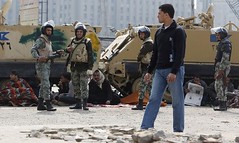

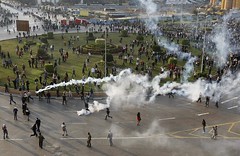
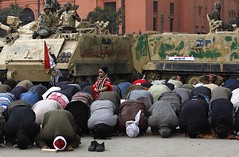




Sumber Daylife,USA, PEngarah JAIS dan Utusan… Ka ka ka
Nanti jangan makan kurma rutab Iran, pasal yang tanam orang sesat. Jangan makan kurma nabi di Medinah, pasal yang tanam di Medinah tu pun orang Syiah. Mereka tu sesat.
Pergi sokong orang Yahudi serang Hezbullah, pasal Hezbollah Syiah tu akan bunuh orang-orang Palestin pasal dia orang lain mazhab…kah kah kah.
Kah kah kah pandainya ambek sumber… http://www.shia-explained.com/archives/1312
By: a@a.com on Disember 17, 2010
at 7:31 pm
salam
tak mau kata kat hang…tapi kena kata jugak….bodolah hang ni…bodo sangat. Kalau cam tu…pergi haji nanti jalan kaki la no…sebab so far kapal terbang semua orang kategori sesat yang buat…huhu
By: manis on Disember 17, 2010
at 11:22 pm
sape sesat?kenapa sesat meyesatkan?tulah sunni.jumpa di akhirat.siapa tolong siapa.Solawat.
By: shuhadaa on Disember 18, 2010
at 1:10 am
salam shuhada…
tak meyesatkan sapa2. cuma… elok baca betui2 bagi lebih paham.
By: manis on Disember 20, 2010
at 7:01 pm
Suatu perbuatan yg bodo.. Sakit 2, pukul diri sndiri. Bengong org Syiah…
By: BigMan on Disember 17, 2010
at 9:49 pm
Ngeri molek aku tengok.. Nok mutoh sero…
By: BigMan on Disember 17, 2010
at 9:49 pm
salam bro n sis……….
macam festival anggur di eropah daaaaaaaa……
bab sesat nie….kat mesia kita pun macam-macam sesat dok ada………
ada sesat dlm beragama……
ada sesat dlm siasah…..
ada sesat dlm sosial……
ada sesat dlm mengaji……….
naik bukit maxwell kalu tak kena cara pun boleh sesat…………..
dlm sarkis pun ada jugak yg sesat……cari pintu keluaq tak jumpa….
paih tu mintak tolong ngan rimau…tidak pun anak gajah………..
kah kah kah
By: nasik kandaq on Disember 17, 2010
at 10:33 pm
Salam nasik kandaq al-harami.
Dulu hang dok.
Haram sana, haram sini.
Sampaikan kita bagi title.
Al-Harami kat hang.
Tak kang.
Tak kang ini saja.
Ulasan hang.
Sekadaq hang yang sarkis, koot.
Koot la.
By: budak tadika on Disember 18, 2010
at 8:52 am
saya rasa jabatan2 agama perlu mengadakan kempen2 ataupun forum tentang syiah supaya kesesatan syiah dpat didedahkan.Ini kerana saya mendapati masih ramai yg tidak kenal syiah lalu apabila ada pihak2 yg bangkit menentang syiah mereka mengatakan, “biarlah mereka,ini adalah masalah furu’,mereka masih saudara kita yg mengucapkn kalimah syahadah..”..saya percaya yg percakapan seperti ini dtang dari masyarakat yg masih tidak tahu-menahu tntang hakikat sbnar syiah.semoga Allah mengampuni mereka..oleh itu,setiap insan ulul albab yg mengetahui kebenaran ini hendaklah berusaha menyebarkn dakwah ini kepada saudara2 kita yg tidak tahu itu…
dari komen al-muhaqiq dlm posting Faisal Tehrani Mengaku Syiah Dalam Saasatul Ibaad
By: pinkturtle2 on Disember 17, 2010
at 11:30 pm
Apalah pulak peranan PAS?
By: budak tadika on Disember 18, 2010
at 8:57 am
Faisal Tehrani dah lama mengaku Syiah secara tersembunyi.
Hal ni bukan rahsia lagi.
By: ikutCeramah on Disember 22, 2010
at 12:24 am
Masalahnya.. La ni baru berani tangkap pun.. Daripada dulu orang syiah yg sesat ni ajak berbincang terutama Doktor MAZA yang senantiasa cakap pandai tu.. Tapi pernah ka dia nak betulkan aqidah diorang yang sesat ni?! Bercakap bab syiah serata masjid dan forum tapi bila orang syiah mula bertanya LARI SANA SINI.. APA BENDA USTAZ MCM NI?! Dah tu FITNAH YANG BUKAN2..!! Dekat University Tehran, pasai apa ada subject semua Mazhab Ahli Sunnah.. Student disitu mcm saya “DAH KENA BUNUH KA?” Penyarah2 ahli sunnah sunnah wal jamaah dalam tu “HABIH MATI KA?”.. JADI CERITA APA USTART DOK BOHONG DAN FITNAH SEPANJANG KEHIDUPAN USTART DALAM DUNIA NIH ?!!
By: Aba zahra on Disember 18, 2010
at 5:01 am
Dari dulu,
orang Syiah ajak bincang?
Bincang tang mana?
By: ikutCeramah on Disember 22, 2010
at 12:14 am
Aba Zahra,
Habaq mai kat sini,
tang mana yang Ustaz Dr MAZA
dok bohong dan fitnah….????
Memang la BELUM SEMUA
pensyarah ahlus sunnah tu mati,
sebab depa sempat lari.
Tapi hang jangan ingat
kami orang sunnah ni bodo
macam orang UMNO.
Kami tau,
orang syiah mcm hang ni,
ada perancangan tersusun
nak pi bunuh semua ulamak sunnah
secara berperingkat.
Hangpa mungkin tak berani
nak buat lagu tu kat Malaysia.
Tapi suku sakat hang kat Iran tu,
tengah sakan buat lagu tu…
By: ikutCeramah on Disember 22, 2010
at 12:20 am
Salam 1Malaysia.
Salam TGNA suka.
Ada otak, tak guna.
Guna lutut.
Ada buku, tak baca.
Ikut celamah.
Ada nasik, tak makang.
Dok kandaq.
Ada Tok Ketua, tak pakai.
Pakai great chief.
Ada kampong, tak mau.
Mau jadi Kucing Kota.
Tajuk mesti diulas oleh:
Ustaz Neutron Al-Munafikun.
Ustaz ikutCeramah Al-Celamah.
Ustaz nasik kandaq Al-Harami.
Sekadaq kena guna otak.
By: budak tadika on Disember 18, 2010
at 8:49 am
salam bro n sis………..
budak tadika on Disember 18, 2010
at 8:49 am
ini ulasan ke??………
kah kah kah………
lagi merapu merepet………..
By: nasik kandaq on Disember 19, 2010
at 1:55 am
Salam nasik kandaq.
Tu yang kita minta.
Hang ulas tu.
Kang hang ada title.
Al-Harami.
Sekadaq bacalah betoi2.
By: budak tadika on Disember 19, 2010
at 10:06 pm
Salam 1Malaysia aka
Salam TGNA suka.
Bila tak kena, kata ajaran Yahudi.
Ada ka.
Kita yang tak betoi.
Salahkan orang.
Seropa.
PR yang tak betoi.
Salahkan BN.
Dok ikut perangai hodoh tigasukusakat.
nasik kandaq dan great chief.
Sekadaq ada persamaan hodohnya.
By: budak tadika on Disember 19, 2010
at 10:13 pm
Syiah yang sesat? Sumber mana? …Sabar dulu….
Anda boleh mengatakan Ahlul Sunnah Wal Jamaah atau Syiah Jaafari atau Syiah Zaidiah atau Ibadiyah sesat kalau anda tidak termasuk pengikut dalam 8 Mathahib yang diendorsekan dalam Deklarasi Amman.
Mengatakan Ahlul Sunnah Wal Jamaah atau Syiah Jaafari atau Syiah Zaidiah atau Ibadiyah sesat adalah menghina Deklarasi Amman yang di endorse lebih 500 ulama dunia, raja-raja Arab, Mufti-mufti termasuk menghina persetujuan DSAI, Tun Abdullah bin Haji Ahmad Badawi, Dato’ Dr. Abdul Hamid Othman, Khairy Jamaluddin dll.
Mengatakan Ahlul Sunnah Wal Jamaah, Syiah Jaafari, Syiah Zaidiah dan Ibadiyah sesat adalah juga menghina fatwa yang dikeluarkan oleh Shaikhul Azhar, Dr. Muhammad Sayyid Tantawi, Mufti Besar Mesir, Professor. Dr. Ali Jumu’a, Pengarah Majlis Sunna dan Sira Qatar, Shaykh Dr. Yusuf Abdallah Al-Qaradawi dan ulama-ulama dari Akademi Fiqh Islami Saudi Arabia.
Mengatakan Ahlul Sunnah Wal Jamaah, Syiah Jaafari, Syiah Zaidiah dan Ibadiyah sesat menjadikan anda wakil/ejen tidak langsung zionis dan musuh Islam yang memprovokasikan perpecahan umat Islam. Banggakan?
Point 1 Deklarasi Amman
Whosoever is an adherent to one of the four Sunni schools (Mathahib) of Islamic jurisprudence (Hanafi,Maliki, Shafi‘i and Hanbali), the two Shi‘i schools of Islamic jurisprudence (Ja‘fari and Zaydi), the Ibadi school of Islamic jurisprudence and the Thahiri school of Islamic jurisprudence, is a Muslim. Declaring that person an apostate is impossible and impermissible. Verily his (or her) blood, honour, and property are inviolable..
http://ammanmessage.com
By: a@a.com on Disember 20, 2010
at 3:50 am
salam bro n sis……..
mengimbas semula tulisan a@a.com on Disember 20, 2010
at 3:50 am
apa yg sdr maksudkan ialah……..
pada 9 Nov 2004……… raja jordan….Raja Abdullah II bin Al-Husein membuat ucapan supaya umat islam bersikap toleransi dan bersatu wpun berbeda mazhab di seluruh dunia Islam………………….
ucapan dan seruan ini…………….
kemudiannya dikenal dengan sebutan The Amman Message atau Risalah Amman atau Deklarasi Amman…………
walau pun telah disahkan lebih dari 500 ulama-umara seluruh dunia dari 84 negara………..
apa yg terkandung dlm deklarasi tsbt jarang diungkap dan diperkenalkan kepada masyarakat……….
yang terjadi adalah media utama setiap negara islam tadi terus menerus mengungkap dan mencipta permusuhan……..kebencian dan saling fitnah dan mengadu domba antara mazhab dan perbedaannya……….
yg jadi masalahnya sekarang…….
paparan seperti clip di atas tadi itu……..masyrkt terus menilai dan membuat justifikasi terhadap amalan syiah ini…….
umat islam malaysia tidak boleh menerima hakikat penderaan jasmani seperti di atas tu………
melibatkan wanita dan kanak-kanak bermandi darah…..(kononnya marah terhadap pembunuh saidina hussien r.a)………
berjalan di atas bara api yg begitu panas tanpa kasut……
ini ajaran islam ke??
membelah kepala sendiri hingga berlumuran darah……..
ini ajaran dan kehendak islam ke??
ini yg masyarakat islam sejagat menilai……….
hasil dari ini mereka(pengikut syi’ah) melihat mazhab selain dari mereka termasuk
ahlul sunnah halal untuk mereka bunuh……..
sebagai contoh cuba sdr lihat apa yg syi’ah lakukan terhadap ahli sunnah di Iraq setelah mereka memegang kuasa…………….
ribuan orang yg mereka bunuh dan siksa…….hanya kerana mereka bernama abu bakar….bernama umar….bernama uthman……bernama ali….bernama ai’syah……
tu belum kira di tempat lain sperti di pakistan walau pun syiah bukan majoriti di sana…….mereka tetap bermusuhan dan membunuh ahli sunnah………
di malaysia memang ramai nama-nama sperti nie……….
boleh habis satu negeri daaaa……….
alhamdulillah setakat sekarang ini……di malaysia walaupun sambutan dibuat jugak……tetapi takat kacau bubur asyura atau buboq sora saja……boh kacang…pisang…ubi…jagung….panaskan api….kacau……..lepas tu boleh lah buat kenduri dan panggil laa budak-budak makan…….tu yang kadang-kadang tak cukup tu………..
Patut jugak diberitau dan dipanjangkan……….
sebagaimana fatwa-fatwa ulama Syiah……. menyiksa diri untuk menghormati Muharram adalah amalan yang diharamkan…………
tapi amalan ini masih berleluasa……..
siapa salah???………………………
By: nasik kandaq on Disember 22, 2010
at 1:38 am